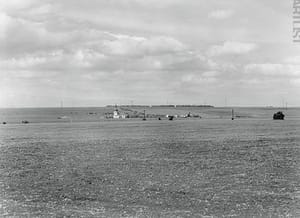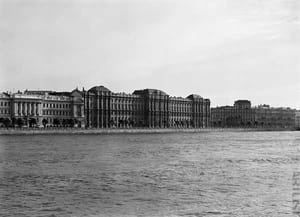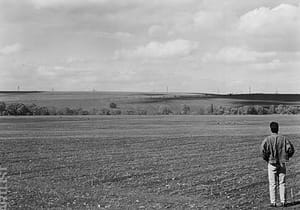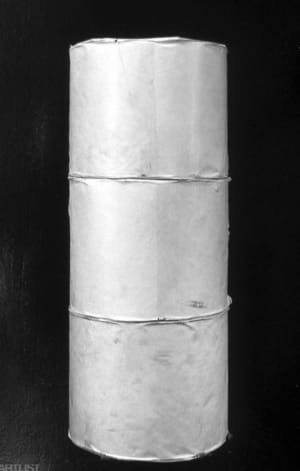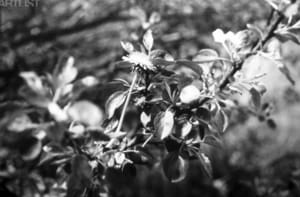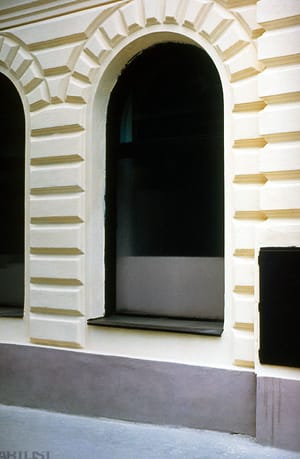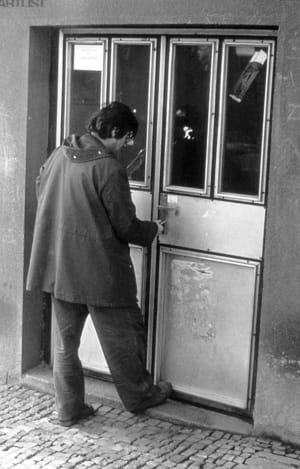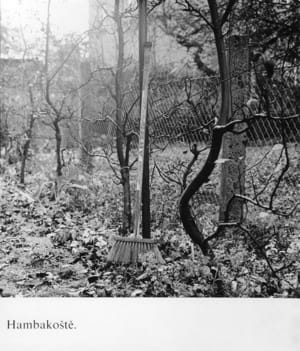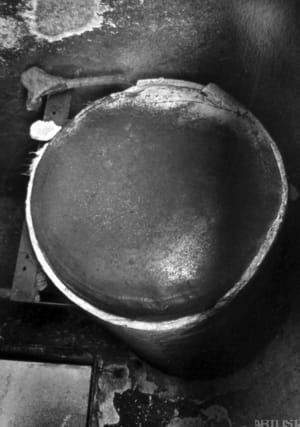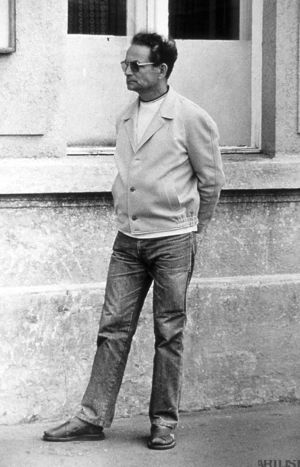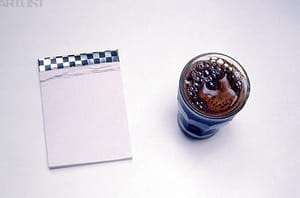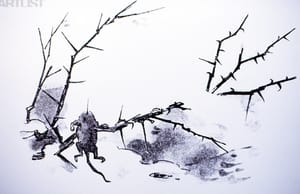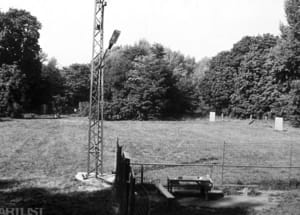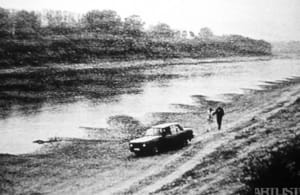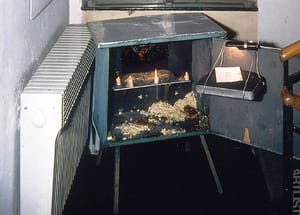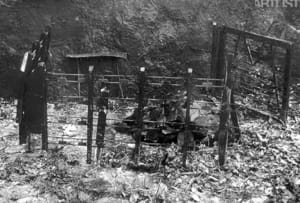- First Name
- Martin
- Surname
- Polák
- Born
- 1966
- Birth place
- Praha
- Place of work
- Prague
- Keywords
- CSU Library
- ↳ Find in the catalogue
About artist
Martin Polák (1966) and Lukáš Jasanský (1965) are an important artist duo on the field of photography in contemporary art in the Czech Republic as well as abroad. Their importance is primarily given by their specific conceptual approach to this media, which has opened up the path for its further development and had great influence on the production of photography in the sphere of free art. As curator and photography theoretician Pavel Vančát said, Polák and Jasanský pre-prepared the ground for the entrance of post-conceptual approach to photography that is distinguished by examining the media of photography by thematizing its position and use in artistic, social and other contexts.
They met at the Secondary Technical School of Graphics in Prague where they studied Applied Photography. In both cases, their direction was definitely influenced by the fact that they came from families of photographers. It was already back then that they experienced a mutual creative understanding and their first cooperation on photographic assignments and school projects took place. They started to work together as an artistic duo in the mid 1980s, which was at the time that they both decided to continue studying at Prague’s FAMU (Film and TV School of Academy of Performing Arts in Prague), which they eventually achieved. At that time the canon of modernistic photography was prevailing at the Department of Photography at FAMU, with occasional post-modernistic tendencies (we can recollect the success of the Slovak New Wave), towards which Jasanský and Polák had deliberately delimited themselves already with their early cycles, or they directly reacted to it. Therefore, it comes as no surprise that they did not encounter great success on the school grounds and in the contemporary Czech artistic and photographic discursus. Things were different abroad where they started to penetrate already during their studies. One year prior to the Velvet Revolution, for example, they made it to the exhibition Young European Photographers Award in the Ludwig Museum in Cologne, Germany. At this time they also had an important and inspirational connection to the artistic groups Tvrdohlaví (Headstrong) and BKS (Bude konec světa) (The End of the World Is Coming), which was demonstrated by their participation in the exhibition of Tvrdohlaví in the Gallery ULUV in 1989. We can only speculate about the fact who influenced whom in what way. But it is clear that these two artists were connected by their critical view of the social and political situation and the ridicule thereof, their fascination for kitsch and other elements.
One of their first photographic series’, which was also one of the few presented at a school exhibition is Pragensie (1986-1990). This was a cycle of black and white negatives capturing the ordinariness and sort of “dullness” and silence in their views of houses, cars on the street, petro stations, but also of historical objects. In these images of high technical quality but deliberately banal content, we can recognize a specific style with which Jasanský and Polák have continued throughout their artistic career. They are reportages without content or situation, which give a meaning to reportage photography. As Tomáš Pospiszyl wrote in one of his texts: “The actual subject of the cycle was the ability of a photograph to record the ordinariness and simultaneously stereotype of reportage photo-journalism.” Most of their works are characteristic for capturing banalities, references to established laws and genres of photography and an adequate dose of irony and humour, as well as the collective cycle of usually large format negatives as their means of expression. This characteristic is also obvious in the thesis work – two photographic collections called Jokes and Reportage and Humanistic Photography (Vtipy a Reportážní a humanistická fotografie), with which they unsuccessfully ended their studies at FAMU. The theoretical part was evaluated as “unsatisfactory”. It contained a sort of typology of the most often used jokes as well as interviews with authors in which they asked themselves questions through a fictive figure. The series of Jokes where a short text is added to each photograph clearly reveals the already mentioned specific humour based on ordinariness and banality. The photographs depicted deliberately created and staged still life and they functioned as a sort of illustrative example of this or that joke. The second part of the thesis work, Reportages is in a sense a follow up to the previously mentioned Pragensie and once again it represents an effort of the artists to capture reality without action – to create some sort of absurd reportage in which the sense of this photographic genre is lost. This series also contains commentary about the everyday greyness of that time. The critical vertone is relatively unnoticeable; it does not scream out but it is strongly present under the layer of ironic tone.
Another important characteristic of the photographic cycles of this duo is the fact that there is an important whole and the individual photographs cannot function well without the context of the others. Their way of working is based on a well thought out content of the photographed, subsequent collective photography, evaluation of the selection of individual shots for the final series’ and of course also the way of presentation, which depends on the context of the place as well as on the content of the message. It is therefore obvious that these two artists truly work as one and their view of reality is common and shared. There is no unifying theme among their chosen motives but some of them reoccur. The themes range from ordinariness and daily objects, through documentation of the activities of an individual, all the way to religious motives and the influence of religion in contemporary world. Here we can recall their early cycle Cemeteries (Hřbitovy) when they photographed tombstones on which they arranged various objects and branches as the remains of some religious ritual. The topic of religion projected in another way in the series Kościoły, kościoły from the year 2012 capturing postmodern church architecture in Poland, where the un-unified architecture form obscures its function for most of us and creates the impression of something unknown and unidentifiable. Another motive, which repeated in their work was the documentation of the life and activities of one person and in this case they also used quite different approaches. As the first example we can mention the series Director and Founder (Ředitel a zakladatel) (2011), when Polák and Jasanský created a sort of record of daily activities and obligations of the director of the cultural centre Sokol in the Polish regional town Nowy Sącz. In another example it was the cycle of photographs Jan Merta, which is made up of images of places that were fundamental and inspirational for the life and work of this artist. Here again I must refer to Tomáš Pospiszyl who states with respect to this: “The photograph here becomes a tool for retrogressive building of memory, artificially created archive of life’s pilgrimage where the invisible surface of things mingles with levels of hidden meanings.” This mingling appears to me as one of the most fundamental moments in all of their work.
Most of the time we would search in vain for the presence of a person in the photographs of Polák and Jasanský. In spite of that, man is concealed here in the “history portrayed” as is the case in Jan Merta, but also in a more general sense in the references to human activities and influences. Also as art theoretician and curator Karel Císař, who has been interested in the work of Polák and Jasanský for a long time, states, the presence of man often appears here through the anthropomorphic character of buildings that can remind of the human face or a mask. One of the exceptions where the capturing of man is the cardinal element is in the series Men (Chlapi) (1989-1990), which once again deals with the creation of some sort of absurd archive with the typology of men in various age groups and social statuses at the end of the 1980s thanks to which we could assign this work as having a dehumanized or impersonal character.
The photographic cycles in which Polák and Jasanský capture buildings, individual architectonic elements, urban segments or automobiles and other objects , that recur, and hence create some typology and archive, can remind us of the production of Düsseldorf Photographic School. They differ from it with the previously mentioned specifics – irony, emphasis on banality or also their critical vertone, which is connected primarily to Czech photographic tradition, the Czech environment, society, culture and landscape. They show us the un-beautified and bare image of reality in which we live or lived.
- Author of the annotation
- Alžběta Cibulková
- Published
- 2015
CV
1986-1992 FAMU, Praha, subject: photography
1980-1984 Hight School of Graphic, Prague, subject: photography
Exhibitions
- Solo exhibitions
-
2002
Vesnická rekonstručko, Galerie Šternberk
Vesnická rekonstručko, Galerie Jídelna, Česká Lípa
2001
Vesnice / Village, České centrum, Berlín, Německo
2001
Zemská výstava fotografie / Land exhibitions of Photography, Galerie Švestka,
Praha
2000
Výstava krajinářské a památkářské fotografie / Exhibition Landscape and Preservation Photography, Galerie 761, Ostrava
2000
Beskid, Muzeum V. Löfflera, Košice, Slovensko
1999
Výstavy fotografií / Exhibitions of photographs, Galerie V.Špály, Praha
1999
Vrchlabí, České Budějovice
„Without the wall, Mramorový palác, Petrohrad, Rusko
1998
PRAGENSIE 1985 - 1990, Staroměstská radnice, Praha
Kuranda, Galerie Behémót, Praha
Abstrakta, Galerie E.Filly, Ústí nad Labem
Harmonie / Harmony, Špálova galerie, Praha
CLOES ECHOES, Městská knihovna, Praha
Tváří v tvář / Face to Face, Galerie Aktualität des Schönen, Liberec
Stálá expozice Galerie hlavního města Prahy / Permanent Exhibition of City Gallery Prague, Dům U Zlatého prstenu, Praha
1997
Protiválečná a humanistická fotografie / Aantimilitaristi and Humanistic
Photography, Galerie mladých, U dobrého pastýře, Brno
Chudáčkové boží / Lame Duck of God, Galerie u bílého jednorožce, Klatovy
1996
Vyprdnutá fotografická abstrakce / , JNJ galerie, Praha
1995
Vtipy / Jokes, Divadlo hudby, Olomouc
1994
Vtipy, vtipy,vtipy / Jokes, Jokes, Jokes, Window Gallery, Praha
1993
Komplexní výstava fotografií v muzeu / A Complex Exhibition of Photograph
in museum , Olomouc
1993
FLUXUS, galerie MXM, Praha
1990
Fotografická výstava v roce 1990 / Photograph exhibition in 1990, Fotochema, Praha
Jasanský - Polák: Fotografie, galerie M.& R. Fricke, Düsseldorf, Německo
1989
Výstava fotografií Exhibition of Photography, galerie Kniha, Praha
- Group exhibitions not included in ARTLIST.
-
2003
galerie Futura, Praha
2002
Icing, Galerie Václava Špály, Praha
Dunajvaros, Madˇarsko
2002
Bienále mladých / Biennial of Young, Zagreb, Slovenia
The View From Here, Ludwig Muzeum, Budapest, Mad“arsko
GHMP, Praha
D´un printens louter Prague, Belfort, Francie
2001
Bienále mladých / Biennial of Young, Záhřeb, Chorvatsko
Bohemian birds, Kunsthaus, Drážďany, Německo
O lidech / About People, České muzeum výtvarných umění, Praha
Jasanský Polák jsou a u Sýpce Velek, Galerie Sýpka,
Česká republika
2000
Konfrontace, České centrum, Londýn
1997
Towards the Objects, Riverside studio, Londýn, Velká Británie
Truce: Echoes of Art in an age of endless conclusions,
Site SantaFe, USA
Geboren um 68, Berlín, Německo
Delta, Muzeum moderního umění města Paříže, Francie
Jistoty a hledání české fotografie, Purkrabství Pražského Hradu,
Praha
1996
Česká abstraHce, galerie V. Špály, Praha
Bronzová ratolest, Stockholm, Švédsko
Schwarzenberský palác, Praha
1995
Na hraně“, galerie V. Špály, Praha
Campo 1995, Venezia, Itálie
1993
To co zbývá / What is reeamining, Štencův dům, Praha
1992
Frontiera, Bolzano, Itálie
Její bratr - Jeho manžel / Her brother- His husband, galerie V. Špály, Praha
Co je nového Praho / What is New, Prague, The Art Institute of Chicago, USA
1991
Československá fotografie / Czechoslovak Photography, Kunsthaus, Hamburg, Německo
1990
Česká symbolika / Czech symbolism, ÚLUV, Praha
Progresivní fotografie v Československu / The Progressive Photography In
Czechoslovakia, Nancy, Francie - 1990
Mülheim, Německo - 1991
Strassbourgh, Francie – 1991
1989
Výstava Tvrdohlaví - jako hosté /Exhibitions – Art Group Stubborns – as
guests, ÚLUV, Praha
37 fotografů / Exhibition of 37 Photographers, Na chmelnici, Praha
1988
Preis für junge Europäische fotografen, Museum Ludwig, Köln,
Německo
De Prague et de Boheme, Toulouse, Francie
- Collections
- Galerie Svit
Monography
- Monography
Malgorzata Skowrónska (ed.), Rytmika cwiczén, Nowy Sacz 2011 Lukáš Jasanský a Martin Polák, Jan Merta, Brno 2011 Štefan Tóth, After Jasanský, Polák, Praha 2011. Pavlína Morganová, „Od současné současnosti k minulé minulosti: Nová a ještě novější média“, Jiří Ševčík, Pavlína Morganová, Terezie Nekvindová, Dagmar Svatošová (eds.), České umění 1980-2010: Texty a dokumenty, Praha 2011, s. 23-54. Pavel Vančát, Mutující médium: Fotografie v českém umění 1990-2000, Praha 2011, s. 152. Adriana Primusová, Sbírka 4.: Nové akvizice, Kutná hora 2011. Karel Císař a Karen Irvine, 50% Grey: Contemporary Czech Photography Reconsidered, Chicago 2010. Tomáš Pospěch (ed.), Česká fotografie 1938-2000 v recenzích, textech, dokumentech, Hranice 2010. Lukáš Jasanský a Martin Polák, Vtipy a reportáže: teoretická diplomní práce 1993, Klatovy 2010. Charlotte Cotton, The Photograph as Contemporary Art, Londýn 2009. Dušan Šimánek, Mimo zónu: Fotografie z let 1970-1989, Praha 2009. Nicola Trezzi, Barbara Spinelli (eds.), Prague Biennale 4, Milán 2009. Karel Císař, „On Use of Photographic Sequences and Series in Contemporary Czech Art, Krakow 2009. Karol Hordziej a Wojciech Novicki, Miesiac fotografii w Krakowie, Krakow 2009. Tomáš Pospiszyl, „Hvězdářství v době proměn, Karel Srp, Sandra Baborovská (eds.), Po sametu: současné české umění s přesahy do minulosti, Praha 2009, s. 13-16. Karel Srp a Sandra Baborovská (eds.), Po sametu: současné české umění s přesahy do minulosti, Praha 2009. Vladimír Birgus a Jan Mlčoch, Česká fotografie 20. století, Bonn a Praha 2009. Pohledy dovnitř/ Fotografické prozkoumání Evropského parlamentu, Mnichov 2007. Karel Srp, „Aktuální umění devadesátých let“, Rostislav Švácha, Marie Platovská (eds.), Dějiny českého výtvarného umění VI/2: 1958-2000, Praha 2007, s. 929-951. Antonín Dufek, „Fotografie 1989-2000“, Rostislav Švácha, Marie Platovská (eds.), Dějiny českého výtvarného umění VI/2: 1958-2000, Praha 2007, s. 981-999. Josef Moucha, Fotogenie identity: Paměť české fotografie, Praha 2007. Uta Grosenick a Thomas Seelig (eds.), Photo Art: Fotografie im 21. Jahrhundert, Kolín nad Rýnem 2007. Charlotte Cotton, „The New Color: The Return of Black-and-White, Tip of the Tongue, 2007. Charlotte Cotton, The Photography as Contemporary Art, Londýn 2006. Tomáš Souček, Dvojice Jasanský – Polák: teoretická magisterská práce, Praha 2006. Valentina Sansone, Giacarlo Politi, Helena Kontova and Gabriele Guzzo, Prague Biennale 2: Expanded Painting – Acción directa, Miláno 2005. Marek Pokorný, Zrcadlo přírody: současné české umění, Praha 2005. Tomáš Pospěch, Architektura bez architektů, Hranice 2005. Jolana Havelková, Naďa Kovaříková, Helena Musilová, Funkeho Kolín/ Město: 6. ročník fotografického festivalu, Kolín 2005. Perdita von Kraft, Czech Landscape: Lukáš Jasanský and Martin Polák (CZ), Berlín 2004. Francesco Bonami, Sarah Cosulich Canarutto, Instant Europe: Fotografia e video della nuova Europa, Codroipo 2004. Lukáš Jasanský a Martin Polák, Vesnice, Praha 2004. Pavel Vančát a Jan Freiberg, fotografie??, Galerie Klatovy- Klenová, Klatovy 2004. Olga Malá a Karel Srp, Z lásky: Generace 90. let v Praze, Bonn a Praha 2003. Marek Pokorný: „Konceptuální krajiny fotografie“, Lukáš Jasanský Martin Polák (eds.), Lukáš Jasanský, Martin Polák: Zemská fotografie, Praha 2003. Pavel Vančát, „Média v polích“, Lukáš Jasanský Martin Polák (eds.), Lukáš Jasanský, Martin Polák: Zemská fotografie, Praha 2003. Marek Pokorný, Pavel Vančát, Lukáš Jasanský a Martin Polák, Zemská fotografie, Praha 2003. Phillippe Cyroulnik, Prague: D’un printemps l’autre, Belfort 2002. Robert Stearns, The View from Here: Recent Pictures From Central Europe and the American Midwest, Minneapolis 2002. Helena Rišlinková (ed.), Česká a slovenská fotografie osmdesátých a devadesátých let 20. století, Olomouc 2002. Perdita von Kraft a Johannes Am Ende, Das flache Land: Positionen einer unspektakulären Sicht, Cottbus 2001. Pavel Liška, Lukáš Jasanský, Martin Polák: Ze série České krajiny, 1999-2000/ Milena Dopitová: Pojď, ukážu ti cestu rájem, Pražské madony, 2000, Řezno 2001. Vít Havránek (ed.), Slepená intimita, Praha 2001. Alena Potůčková, … o lidech: Několik pohledů na současné české výtvarné umění, Praha 2001. Erin Wright a Colin Zaug, Examining Territories, Santa Fe 2000. Karel Srp, O smyslu odlišného: Lukáš Jasanský a Martin Polák v krajině, Bohemian Birds: Postavení současného českého umění, Drážďany 2000, s. 64-72. Harald Kunde a Peter Dittmann, Bohemian Birds: Positionen tschechischer Gegenwartskunst, Drážďany 2000. Elena Kolovskaya, Wihout the Wall, Petrohrad 1999. Clemens Brocker, Kunstausstellung Hommage á Fanz Kafka, Augsburg 1999. Karel Srp (ed.), Lukáš Jasanský - Martin Polák, Pragensie 1985-1990, Praha 1998. Karel Srp a Olga Malá, Blízké ozvěny: Veřejné tělo a umělý prostor, Praha 1998. Karel Srp, „Něco o fotografiích a jiných médiích“, Olga Malá a Karel Srp, Současné umění, Praha 1998. Olga Malá, „Vábení grálu“, Olga Malá a Karel Srp, Současné umění, Praha 1998. Janine Sieja (ed.), Truce: Echoes of Art in an Age of Endless Conclusions, Santa Fe , New Mexico 1997. Francesco Bonami (ed.), Delta, Paříž 1997. Francesco Bonami (ed.), Echoes: Contemporary Art at the Age of Endless Conclusions, New York 1997. Lukáš Jasanský a Martin Polák (malý bílý katalog), Brno 1997. Martin Dostál a Marek Pokorný (eds.), Česká abstraHce, Praha 1996. Lukáš Jasanský a Martin Polák (velký bílý katalog- fotografické cykly: Abstrakce, Fluxus, Příroda), Praha 1996. Vladimír Birgus a Miroslav Vojtěchovský (eds.), Jistoty v hledání v české fotografii 90. let, Praha 1996. Francesco Bonami, Campo 95, Turín 1995. Andrée Cooke, The British Council Window Gallery, Prague: Selected Exhibitions 1993-95, Praha 1995. Petr Balajka (ed.), Encyklopedie českých a slovenských fotografů, Praha 1993. Jiří Ševčík a Jana Ševčíková, To, co zbývá, Praha 1993. Petr Dorůžka, Hudba na pomezí, Praha 1991. Claude Philippot a Serge Therol, Photograhie Progressive en Tchécoslovaquie: 1920-1990, Nancy 1990. Colin Westerbeck, What’s New: Prague: Contempoary Photography from Czechoslovakia, Chicago 1992. Lukáš Jasanský a Martin Polák, Fotografická výstava v roce 1990, Praha 1990. Anna Fárová, 37 fotografů na Chmelnici, Praha 1989. Lukáš Jasanský a Martin Polák, Výstava fotografií 1989, Praha 1989. Joël Savary, De Prague et de Bohéme/ Čeští fotografové, Toulouse 1988.
- Articles
Josef Chuchma, „Fotografové Jasanský a Polák: Čeští chlapi z 80. let, to jsou ale zjevy, MF Dnes- Kavárna on-line“, 6. 5. 2010.
Kateřina Černá a Karolina Jirkalová, „Počitadlo z Bajkonuru: S Lukášem Jasanským a Martinem Polákem o principech“, Art and Antiques, č. 4/2010, s. 28-37.
Tomáš Pospěch, „Jasanský / Polák: 10 000 a chlapi“, Ateliér, č. 9/2010, s. 28-37.
Pavel Baňka, „ Praha (a její fotografie)“, Fotograf, č. 15/2010, s. 72-76.
Petr Volf, „Fotografie: Nejvýznamnější fotografové, nejsilnější díla“, Reflex, č. 18/2009.
Danica Kovářová, „CZ Umělci VI.: Martin Polák a Lukáš Jasanský“, Dolcevita, č. 10/2008, s. 36-37.
Mariana Serranová, „Vesnice- katalog Lukáše Jasanského a Martina Poláka“, Fotograf, č. 5/2005, s. 118-119.
Aleš Kuneš, „Fotografie??“, Ateliér, č. 7/2005, s. 7.
tranzit.org, „Museum in Progress: série výstav v mediálním prostoru /inzerce/“, Respekt, č. 15/2004, s. 17.
Mariana Serranová, „Pravda a klišé o české vesnici: Lukáš Jasanský a Martin Polák vystavují v pražské Galerii Švestka“, Hospodářské noviny, 18. 6. 2004, s. 11.
Vjera Borozan a Mariana Serranová, „Extrakt městského a vesnického ‚designu‘: S fotografy Lukášem Jasasnkým a Martinem Polákem“, Fórum architektury a stavitelství, č. 5/2003, s. 60-61.
Josef Chuchma, „Proč je ostrá jediná zvětšenina- kostel sv. Ignáce?“, MF Dnes, 22. 5. 2003, s. C9.
Pavel Vančát, „Lukáš Jasanský a Martin Polák: Naprostá nejednoznačnost“, Fotograf, č. 2/2003, s. 54-65.
Karel Císař, „Mezi nebem a zemí“, Umělec, č. 2/2001, s. 66-69.
Karel Srp, „Polibky nad atomovým hřibem“, Ateliér, č. 10/2001, s. 9-10.
Hans- Jörg Rother, „Böhemische Dörfer sind auch ungemütlich: Fotografien von Lukás Jasanský und Marin Polák im CzechPoint“, Frankfurter Allgemeine Zeitung, 4. 11. 2001, s. 3.
Marisa Ravalli, „Two heads are better than one: Polák and Jasanský prove their team spirit“, The Prague Post, 26. 6. - 1. 8. 2000, s. C21.
Lenka Lindaurová, „Top Czech Artists“, Umělec, č. 4/2000, s. 54.
Martina Pachmanová, „Úžas nad skutečností: rozhovor“, Labyrint Revue, č. 5-6/1999, s. 106-114.
Karel Císař, „Výstavy fotografií/ fotografie výstav“, Umělec, č.2/1999, s. 22-23.
Karel Císař, „Čtyři jsou víc než jedna“, Umělec, č. 1/1999, s. 14-15.
Tereza Bruthansová, „Lukáš Jasanský a Martin Polák“, Elle, č. 2/1999, s. 38.
Lenka Lindaurová, „Co je a co není výstava“, Týden, č. 9/1999, s. 63.
-ze-, „Českobudějovický Dům umění poprvé představuje fotografie“, MF Dnes, 16. 10. 1999, s. 3.
Aleš Kuneš, „Veřejné tělo se předvádí v umělém prostoru Městské knihovny“, Literární noviny, 12. 3. 1998, s. 12.
Radek Váňa, „Zásah syrovou rybou“, Detail, č. 2/1998, s. 15.
Lubomíra Kmeťová, „Jasanský a Polák hledají zvláštní místa“, Lidové noviny, 2. 4. 1998, s. 12.
Marek Pokorný, „Jasanský s Polákem představují zmizelou Prahu“, MF Dnes, 1. 4. 1998, s. 19.
Tomáč Pospiszyl, „Fotografické procházky“, Kritická příloha Revolver Revue, č. 11/1998, s. 22-32.
Karel Srp, „Něco o fotografiích a jiných médiích“, Umělec, č. 3/1997, s. 12-13.
Francesco Bonami, „Jasanský and Polák“, Flash Art (International Edition), č. 195/1997, s. 125.
Pavel Humhal, „Jasanský a Polák“, Imago, č. 3/1996-97, s. 6-9.
Robert Silverio, „Fotografie na okraji“, Kritická příloha Revolver Revue, č. 6/1996, s. 14-19.
Jana Tichá, „Česká abstraHce“, Detail, č. 7/1996, s. 5 a 18-19.
Věra Jirousová, „Značka: Všechny dobré“, Lidové noviny, 3. 6. 1996, s. 12.
Lukáš Jasanský a Martin Polák, „Vtipy“, Revolver Revue, č. 30/1995, s. 142-153.
Lukáš Jasanský a Martin Polák, „Diplomová práce“, Revolver Revue, č. 23/1993, s. 73-87.
Viktor Pivovarov, „Pozvání k tanci“, Výtvarné umění, č. 1/1991, s. 45-50.
Zdeněk Primus, „Progressive Fotografie in der CSSR“, Photonews: Zeitung für Photographie, č. 1/1990, s. 10-11.
Petr Balajka a Martin Hruška, „Fotografové na Chmelnici: Snaha nastavit člověku nepříliš lichotivé zrcadlo“, Rudé právo, 12. 10. 1989, s. 5.
(red.), „Informace“, Revue Fotografie, č. 3/1989, s. 81.
(ilustrační fotografie), Literární měsíčník, č. 10/1989.
-rs-, „Lukáš Jasanský a Martin Polák“, Československá fotografie, č. 10/1989, s. 435.
